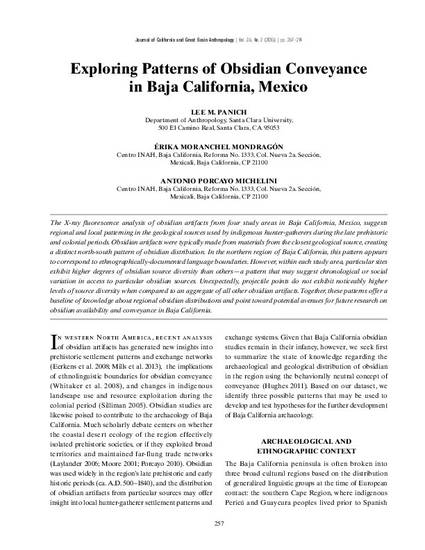
The X-ray fluorescence analysis of obsidian artifacts from four study areas in Baja California, Mexico, suggests regional and local patterning in the geological sources used by indigenous hunter-gatherers during the late prehistoric and colonial periods. Obsidian artifacts were typically made from materials from the closest geological source, creating a distinct north-south pattern of obsidian distribution. In the northern region of Baja California, this pattern appears to correspond to ethnographically-documented language boundaries. However, within each study area, particular sites exhibit higher degrees of obsidian source diversity than others—a pattern that may suggest chronological or social variation in access to particular obsidian sources. Unexpectedly, projectile points do not exhibit noticeably higher levels of source diversity when compared to an aggregate of all other obsidian artifacts. Together, these patterns offer a baseline of knowledge about regional obsidian distributions and point toward potential avenues for future research on obsidian availability and conveyance in Baja California.

Copyright © 2015 Malki Museum, Inc. Reprinted with permission.